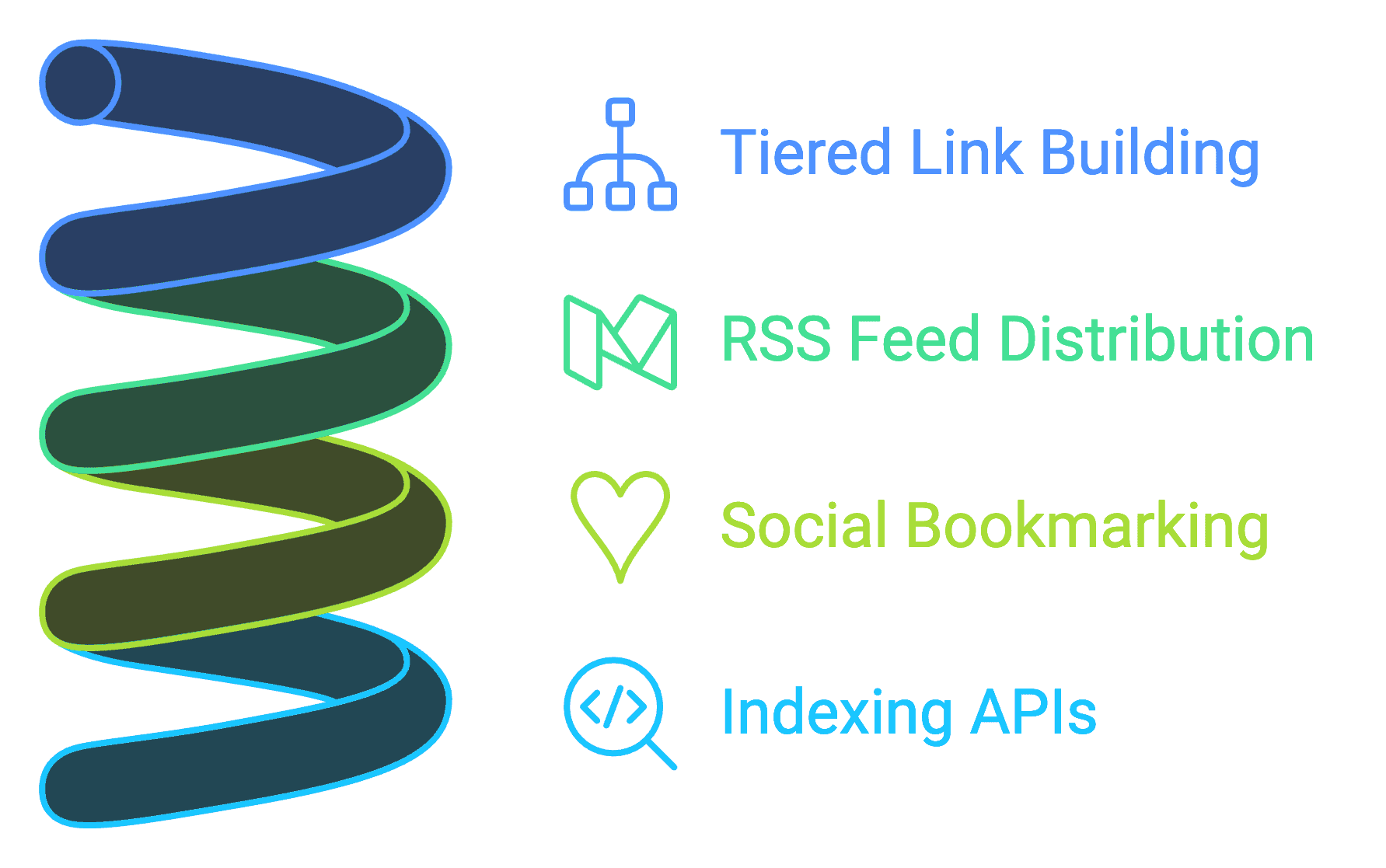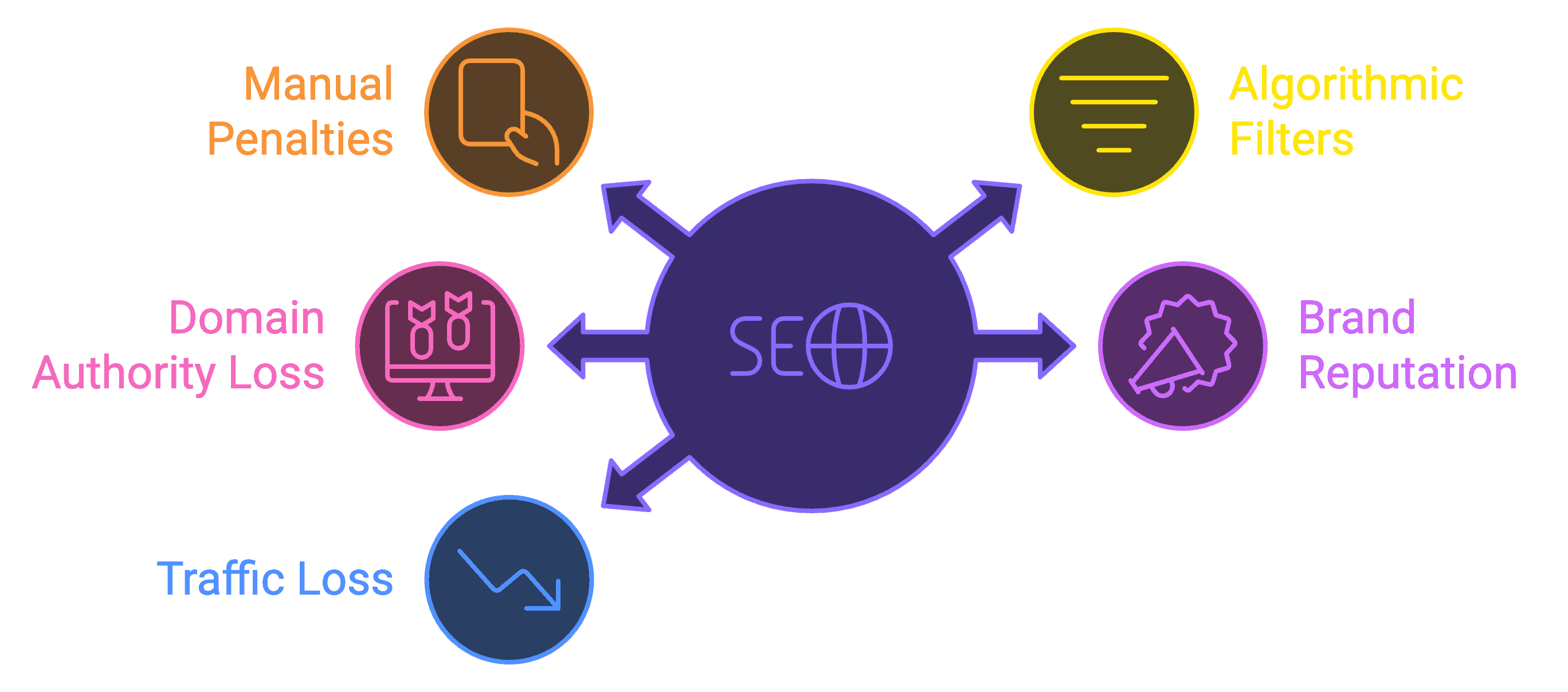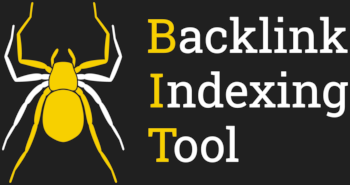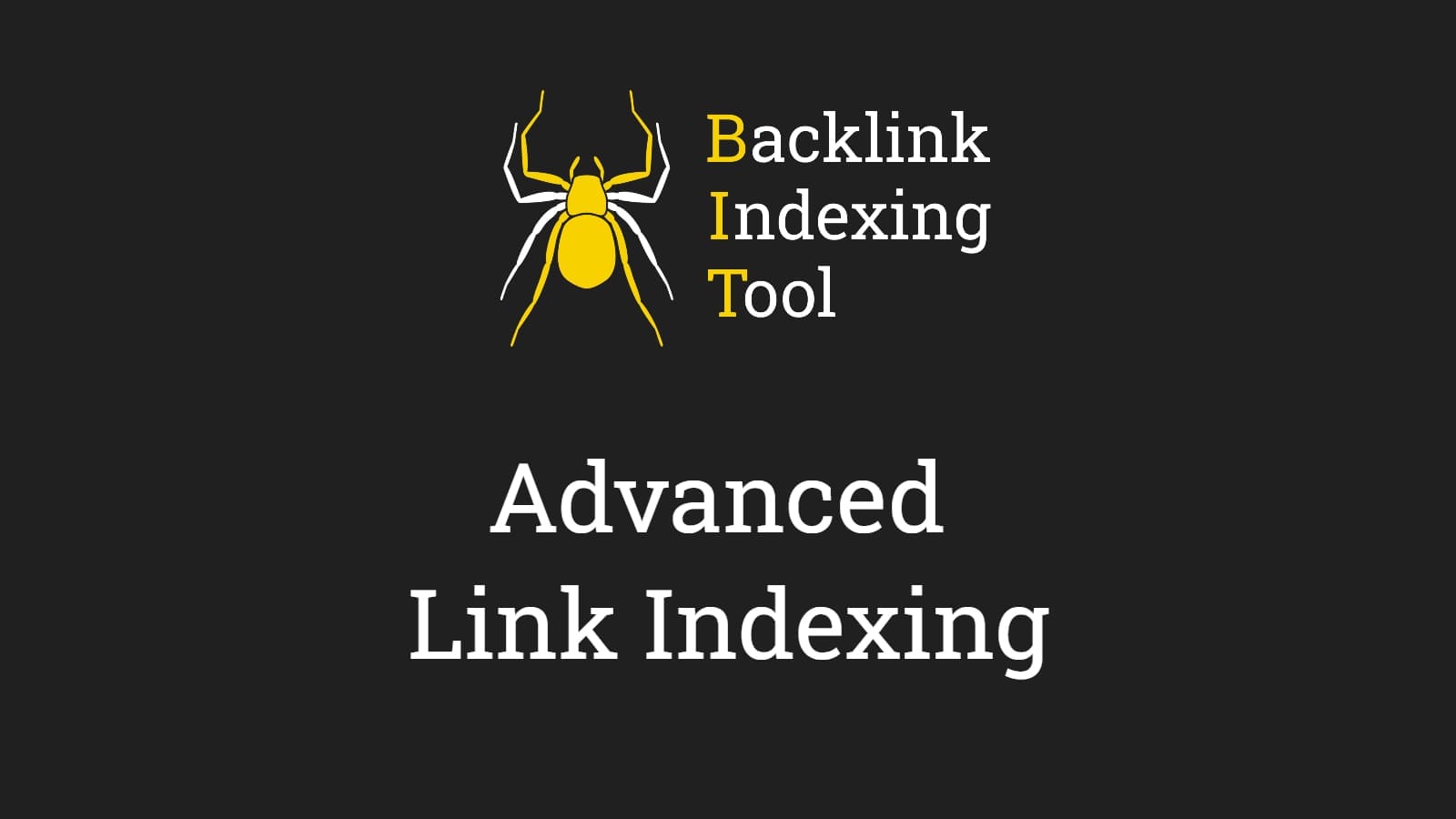Your cart is currently empty!
Link indexing plays a crucial role in maximizing SEO effectiveness through strategic backlink discovery and valuation by search engines.
This guide examines advanced indexing methods that achieve 85-95% success rates, compared to traditional approaches averaging 30-40%.
We explore implementation techniques, risk management strategies, and industry-specific solutions while analyzing how evolving search engine technologies impact indexing performance.
Key focus areas include API integration, automated monitoring systems, and credit-based verification processes that ensure optimal return on link-building investments.
What do you need to know about link indexing?
Link indexing is vital in SEO, ensuring backlinks are discovered, crawled, and stored by search engines for ranking impact.
Properly indexed links can start influencing rankings within 24-72 hours, while unindexed links offer no SEO value, regardless of quality or relevance.
Effective indexing supports domain authority and enhances search visibility.
Advanced methods, such as those used by Backlink Indexing Tool, focus on API integration, automated monitoring, and credit-based verification to achieve high indexing rates and a solid return on link-building investments.
These tools streamline link submission and tracking, allowing users to monitor link performance in real time and maximize indexing efficiency.
Evaluating indexing success relies on metrics like indexing speed, consistency, and indexing rate percentages.
Tools with detailed tracking provide insights into these areas, enabling SEO professionals to optimize strategies based on link type, placement, and source quality.
Robust indexing practices ensure that link-building efforts yield reliable and impactful SEO results.
What makes advanced indexing different from basic indexing?
Advanced indexing utilizes sophisticated automated systems and strategic distribution networks to achieve superior indexation rates compared to basic indexing methods.
While basic indexing depends on passive discovery through natural crawler behavior, advanced indexing actively pushes links through multiple verified channels to ensure rapid discovery and processing.
| Feature | Advanced Indexing | Basic Indexing |
|---|---|---|
| Processing Time | 24-72 hours | 2-4 weeks |
| Success Rate | 85-95% | 40-60% |
| Monitoring | Real-time tracking | Limited visibility |
| Resubmission | Automated | Manual |
| Cost Model | Credit-based with refunds | Free/unmanaged |
How advanced link indexing evolved?
Link indexing has transformed from manual submission processes into sophisticated automated systems powered by machine learning and API integration.
The evolution timeline shows significant changes in effectiveness:
- 2015: Basic methods achieved 80% success rates
- 2018: Introduction of API-based submission systems
- 2020: Integration of machine learning algorithms
- 2023: Traditional methods drop to 30% success without advanced techniques
Why does advanced indexing matter in modern SEO?
Advanced indexing significantly impacts SEO campaign effectiveness by accelerating link value acquisition and improving ROI measurement accuracy.
With Google processing over 3.5 billion daily searches, faster indexing provides measurable advantages:
- Rankings improve 2-3x faster with indexed links
- Link building ROI increases by 40-60%
- Campaign performance tracking accuracy improves by 85%
- The risk of link value loss decreases by 70%
- Algorithm update adaptation improves by 50%
How does advanced indexing methodology work?
Advanced indexing methodology operates through a multi-channel distribution system that maximizes link discovery while maintaining compliance with search engine guidelines. The process combines API submissions, social signals, and content distribution networks to achieve optimal indexing rates.

What are the core components of advanced indexing?
The core components of advanced indexing consist of three interconnected systems: the Indexing Engine, Link Processing System, and Verification Module.
Each component serves a specific function in our advanced indexing infrastructure, working together to ensure optimal backlink indexation rates.
| Component | Primary Function | Key Features |
|---|---|---|
| Indexing Engine | Link submission and crawling | Multi-channel processing, Queue optimization |
| Link Processing System | Backlink evaluation and categorization | Quality scoring, Pattern analysis |
| Verification Module | Status monitoring and confirmation | Real-time tracking, Success validation |
Our indexing architecture is designed for high uptime and speed, often comparable to industry standards like a 99.9% API uptime and processing speeds capable of hundreds of links per minute.
Real-time tracking and updates every few minutes enhance monitoring, while multi-layer verification ensures accuracy and efficiency.
With that, a comprehensive dashboard offers in-depth reporting, helping users optimize and verify their indexing strategies effectively.
Which technical requirements are essential for success?
For successful advanced indexing, essential technical requirements involve optimized server configurations and webpage structures:
- Server Uptime: Aim for a minimum of 99.5%, with an optimal range above 99.9%.
- Response Time: Keep it under 200ms, with the best results achieved at less than 100ms.
- SSL Security: Configure SSL with a minimum 2048-bit encryption, ideally 4096-bit for enhanced security.
- Mobile Optimization: Ensure a mobile score of at least 80/100, with 95+ as optimal for device compatibility.
- Key Implementations:
- Valid SSL certification
- Responsive design for all devices
- Complete XML sitemaps to improve index coverage
- Canonical URLs to avoid duplicate content issues
- Consistent 200 HTTP response codes
- Well-structured robots.txt to manage crawler access
These benchmarks enhance search engine crawler accessibility, ensuring faster and more effective indexing outcomes across varying search environments.
What factors influence advanced indexing results?
Advanced indexing goes beyond basic crawls, focusing on how search engines recognize, assess, and rank each backlink’s value.
Backlink Indexing Tool was designed specifically to maximize this impact by addressing several core factors that enhance indexing results.
First, the quality and relevance of each backlink play a significant role, as search engines prioritize content that adds value to users.
The frequency and distribution of links also matter, which is why strategies like RSS feed distribution and social bookmarking can improve visibility and indexing speed.
Furthermore, avoiding tactics like PBN indexing helps maintain credibility and reduces the risk of penalties, ensuring that indexing efforts remain compliant with Google’s guidelines.
Through secure, efficient, and high-indexing techniques, Backlink Indexing Tool helps SEO professionals and digital marketers achieve optimal results, making every backlink count.
Which advanced indexing techniques are most effective?
The most effective advanced indexing techniques combine tiered link structures with strategic content distribution methods.
Advanced indexing techniques leverage strategies that optimize backlink discovery and visibility, ensuring search engines prioritize and swiftly index important content. These methods create interconnected pathways that drive efficient crawl paths, enhance indexation rates, and amplify link authority in search results.

How does tiered link building enhance indexing success?
Tiered link building enhances indexing success by establishing multiple interconnected layers of backlinks that create a natural link hierarchy, improving the discovery and indexation rates of primary target links.
The effectiveness stems from creating multiple crawl paths that lead search engines to discover and index primary backlinks more efficiently.
| Tier Level | Purpose | Typical Sources | Impact on Indexing |
|---|---|---|---|
| Tier 1 | Primary backlinks | Authority sites, guest posts | Direct ranking impact |
| Tier 2 | Support tier 1 | Social signals, Web 2.0 | 40% faster indexing |
| Tier 3 | Amplify tier 2 | Bookmarks, directories | 25% improved discovery |
How can RSS feeds accelerate link distribution?
RSS feeds accelerate link distribution by automatically syndicating new content across multiple platforms, which can increase backlink visibility and indexing speed.
When a page is updated, the RSS feed alerts subscribed directories, aggregators, and search engines, triggering crawlers to visit the content sooner.
This approach is beneficial for SEO because it creates immediate pathways for crawlers to find new or updated links, enhancing the likelihood of faster indexing.
Using RSS feeds in link-building also increases content reach by distributing it through RSS directories and aggregators.
This network effect, where multiple sites pull content from the RSS feed, amplifies exposure across diverse platforms, further improving indexing potential as search engines recognize the content’s distribution and relevance.
Why is social bookmarking valuable for faster indexing?
Social bookmarking aids faster indexing by creating references to new links on high-authority, frequently crawled sites, encouraging search engines to discover and index these links more quickly.
Each bookmarked link acts as a signal to search engine crawlers, who regularly visit social bookmarking sites like Reddit, Pinterest, or Scoop.it due to their high activity levels.
These platforms’ high domain authority and frequent updates improve the chances of rapid discovery and indexing for shared links.
In the same context, social bookmarking platforms allow users to categorize and tag content, making links more accessible and relevant in specific contexts, which further boosts their visibility to crawlers.
This structured exposure on well-trafficked sites enhances indexing rates by aligning with search engines’ focus on user-driven content and engagement.
How do indexing APIs work and when should you use them?
Indexing APIs work by providing programmatic access to submit URLs directly to search engine crawlers through automated systems, enabling efficient bulk submission and monitoring of backlinks.
APIs become essential when managing large-scale campaigns exceeding 500 monthly submissions or requiring automated workflows.
Key API capabilities can include:
- Bulk submission (2,000 URLs per request)
- Real-time status monitoring
- Automatic credit management
- Detailed reporting and analytics
- Secure authentication protocols
How can you manage indexing risks effectively?
To effectively manage indexing risks, it’s essential to use sustainable, compliant strategies that prioritize natural link patterns and gradual growth. Strategic monitoring and adherence to industry standards lay a strong foundation for risk-free indexing, setting the stage for in-depth methods to avoid penalties and ensure search engine compliance.

What are the risks and alternatives to private blog networking (PBN) indexing?
PBN indexing risks include severe search engine penalties, domain deindexation, and algorithmic filtering that can permanently damage website rankings.
Google’s sophisticated detection systems actively identify and penalize websites using private blog networks for artificial link building.
Backlink Indexing Tool employs strictly white-hat indexing methods that comply with search engine guidelines, ensuring safe and sustainable link indexing.
| Risk Category | Impact Level | Recovery Time |
|---|---|---|
| Manual Penalties | Severe | 6-12 months |
| Algorithmic Filters | Moderate-Severe | 3-6 months |
| Domain Authority Loss | High | 4-8 months |
| Brand Reputation | Significant | 12+ months |
| Traffic Loss | 40-80% decrease | Variable |
Safe alternatives for link indexing include:
- Content distribution through verified networks
- Editorial guest posting on relevant sites
- Industry-specific content syndication
- Social media content amplification
- Natural link acquisition through valuable content
- Authorized press release distribution
How can you comply with search engine guidelines?
Search engine compliance requires implementing transparent indexing practices that align with established webmaster guidelines while maintaining natural link acquisition patterns.
Backlink Indexing Tool ensures compliance through automated submission rate management, diverse link source verification, and strict adherence to robots.txt directives.
Our system monitors indexing patterns continuously to maintain optimal link velocity.
Some essential compliance elements are:
- Link submission rate control (15-30 links per day)
- Source domain diversity (minimum 80% unique domains)
- Anchor text variation (maximum 20% exact match)
- Content relevance verification
- Technical directive adherence
How do you avoid indexing penalties?
Indexing penalties are avoided by implementing natural link acquisition patterns and maintaining appropriate submission velocities that mirror organic growth.
Backlink Indexing Tool automatically spaces out link submissions, varies anchor text distribution, and monitors indexing patterns to prevent triggering search engine filters.
Our system maintains submission rates below detection thresholds while maximizing indexing success.
Here are some penalty prevention strategy you can apply:
- Daily submission limit: 25 links
- Minimum spacing: 30 minutes
- Anchor text diversity: 70% branded/URL
- Link source variety: 90% unique domains
- Quality threshold: Domain Authority 20+ sites
How do you optimize indexing performance?
Achieving peak indexing performance demands a fine-tuned approach that considers multiple factors. By leveraging data-backed processes and precision tools, our methodology ensures that links are effectively indexed and quickly recognized by search engines.
With this approach, clients can expect consistent and impactful results from their link-building efforts.
What defines successful indexing rates?
Successful indexing rates are defined by the speed, consistency, and reliability with which submitted backlinks are recognized and indexed by search engines.
Key metrics for evaluating successful indexing rates include:
- Indexing speed: Backlinks are typically indexed within 24-72 hours, allowing quicker SEO impact.
- Indexing rate percentage: A high indexing success rate, surpassing the 40-60% standard, reflects system effectiveness.
- Consistency and reliability: Reliable indexing performance across campaigns ensures stability, even with algorithm updates.
- Link quality and relevance: Links from authoritative, relevant sources enhance indexing success and positively influence rankings.
Which tools best track indexing status?
Tracking indexing status requires tools that provide real-time insights, comprehensive reporting, and seamless integration with SEO workflows.
The best tools offer consistent monitoring and accurate updates, allowing SEO professionals to assess link performance effectively.
Backlink Indexing Tool stands out by offering indexing verification with high precision and ease of use, specifically designed to enhance backlink strategies.
Key tools to track indexing status include:
- Backlink Indexing Tool Dashboard: Offers real-time link status, success rates, and indexing timelines, with customizable reports for tracking visibility and performance.
- Google Search Console (for comparison): Provides basic indexing data but lacks automation and detailed reporting. Our tool simplifies indexing checks without requiring Search Console access.
- Indexing APIs: RESTful API integration enables automated updates for large-scale projects, ideal for enterprises managing extensive campaigns directly within their platforms.
How can you optimize different types of links?
Optimizing various types of backlinks is essential for maximizing indexing rates and ensuring each link contributes effectively to search rankings.
Backlink Indexing Tool applies targeted optimization strategies tailored to link type, quality, and placement, which ensures faster indexing and greater impact across all backlink profiles.
Some optimization strategies by link type are as follows:
- Authority links: High-value links are prioritized in our indexing queue, leveraging API submissions for rapid indexing.
- Contextual links: Placed within relevant content, these links gain visibility through syndication to increase discovery and crawl rates.
- Niche and local links: For industry-specific links, RSS and social bookmarking expedite indexing, especially aiding SMBs.
- Directory and profile links: Supported by tiered strategies, these links benefit from additional Web 2.0 and social bookmark signals.
- Social media links: Although no-follow, social links enhance primary link indexing when distributed across high-DA platforms.


Leave a Reply